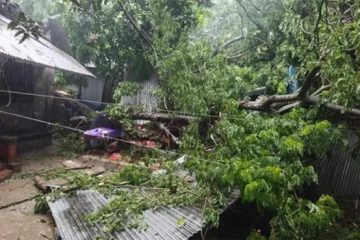Three routes on wish list
 The cabinet on Monday approved Bangladesh’s accession to the Asian Highway network though the route through the country will be decided later on from among three options.
The cabinet on Monday approved Bangladesh’s accession to the Asian Highway network though the route through the country will be decided later on from among three options.
A regular meeting of the cabinet held at the Prime Minister’s Office with Prime Minister Sheikh Hasina in the chair took the long-overdue decision on the planned long-haul trans-border road communications under a project sponsored by the United Nations and its Economic and Social Council for Asia and the Pacific (ESCAP).
Justifying the decision, the Prime Minister told the cabinet meeting that Bangladesh does not want to get isolated from the global process of development.
“For rapid socioeconomic development of our country, we need to be linked with the Asian High way,” she was quoted as saying by her Press Secretary Abul Kalam Azad at a post-meeting press briefing at the PMO.
Azad said the cabinet took the decision under the UN-ESCAP-sponsored Intergovernmental Agreement on the Asian Highway Network.
Asked whether the route of Bangladesh to be linked with the Asian Highway Network was fixed by the cabinet, he said the decision on the country’s accession to the intercontinental thoroughfare has been taken so that Bangladesh in future does have its participation in the process of fixing the route and “amending or changing the intergovernmental agreement”.
He informed the journalists that Bangladesh has three options on route to be linked with the highway. These are:
Benapole-Jessore-Dhaka-Kachpur-Sylhet-Tamabil; Hatikamrul-Dhaka-Kachpur-Sylhet-Tamabil; and Mongla-Jessore-Hatikamrul-Dhaka-Kachpur-Chittagong-Cox’s Bazar-Teknaf-Myanmar border.
The UN-ESCAP Intergover-mental Agreement on the Asian Highway Network was formulated in November 2003 and made effective on July 4, 2005, Azad said.
He said the intergovernmental accord was kept open for signing on December 31, 2005, but Bangladesh did not sign on the deal at the time.
The UN-ESCAP duo initiated its activities on the Asian Highway network in 1959 to set up transport infrastructure for attaining socioeconomic development of Asian and European countries through expanding regional and international communications, Azad said.
Later, in 1992, a project titled ‘Asian Land Transport Infrastructure Development Project’ was approved in Beijing to build land-transport network binding the countries of the Asia-Pacific region.




















